A century of play - a century of learning. Computer games learning curve

Hi, I'm Maria Namestnikova, game designer for Skyforge project in the Allods Team. As you know, in the vastness of our vast country, the design of games as such is not taught anywhere. That is why I, like all of us here, work in game devs not by education, but by vocation. I used to work in another large IT company and my business there was quite good for myself. Nevertheless, when the opportunity to have an interview in the Allods Team fell literally like snow on my head, I did not think for a second. When I received an invitation to go to work, then there was no limit to my happiness - I was waiting for a dream job, difficult but fascinating. Work that requires the full investment of strength and energy, but in return gives amazing results that you can see, feel, experience and feel the incredible satisfaction that you play in your game.
')
The design of the game is a complex process, during which a whole world is created and the rules for its functioning are established. In this process, there are no trifles: any oversight can spoil the impression of the most stringent judges - players. In my article we will focus on the learning curve, that component of the game, which is like a gopher - you do not see it, but it exists. And this gopher, I must say, is damn important!
Learning curve
The saying “It’s hard to learn is easy in battle” is quite vividly demonstrated by a standard learning curve suitable for most activities. The learning curve is a graph, on one axis of which the time of mastering the activity is measured, and on the other - the level of the student’s skill.
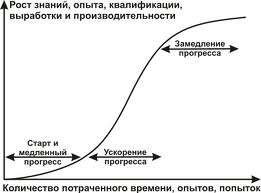
Fig. 1. The learning curve for most activities
As you can see, the standard learning curve implies a slow start, replaced by rapid progress. The zone of slowing down progress falls on the period when the trainee has already mastered a new skill and it has passed to him in the category of skill.
With video games, the situation is somewhat different.

Easy to learn - hard in battle?
To understand how learning curves for different games look like, you need to build a graph, on one of the axes of which there will be the difficulty level of “entering” the game - how easy it is for the player to get started and take the first steps, and on the other how difficult it is to become a master . We divide the space between these axes into four parts and get the following picture:
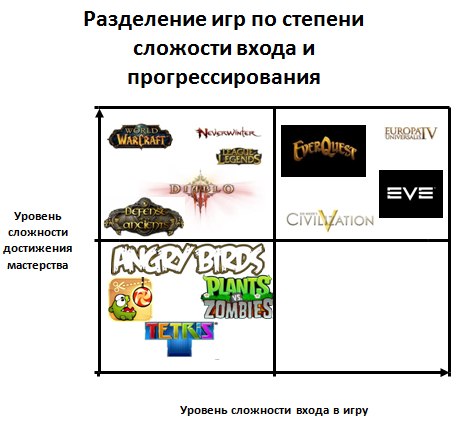
Fig. 2. The division of games according to the degree of difficulty of entry and progression
Any game released or still in preparation for release can be represented by a dot in one of the quarters of this chart.
The bottom left square is occupied by time-killer games. They are easy to learn to play and quite easy to progress. They are played to pass the time, waiting for a friend late for a meeting or during a trip to the subway. In such games there are usually no slats that would be difficult for the player to overcome - they only annoy the player, reducing the audience of the game. The main thing in these games is not the player's progress, but diversity: the more levels, different tricks, “Easter eggs” and other pleasant trifles, the more willingly players return again and again to their favorite timekillers. Take at least the game Angry Birds, constantly updated with new and new thematic levels.
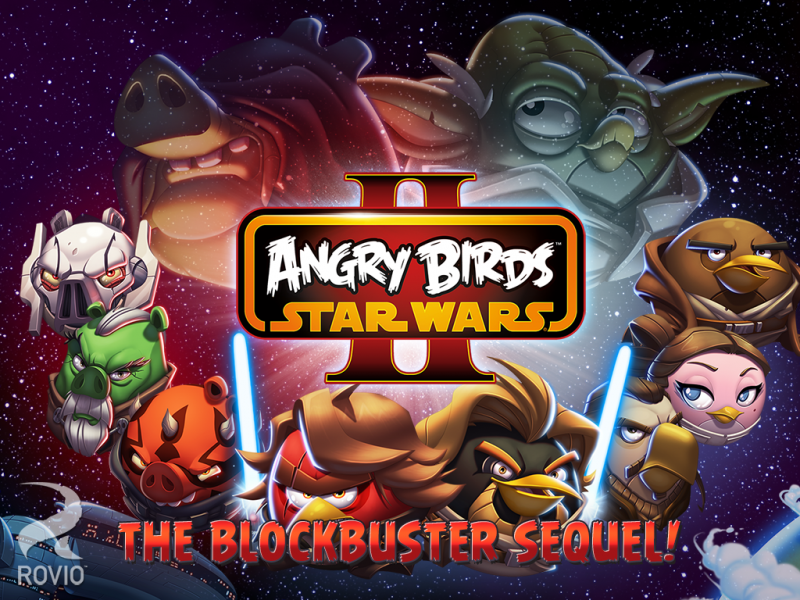
Fig. 3. More and more birds, and they are all meaner
The learning curve for such games will look something like this:
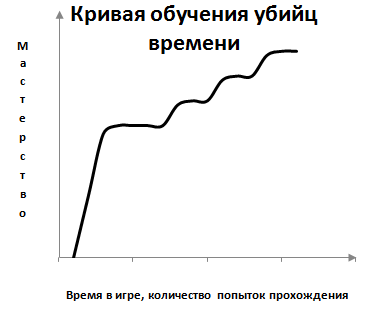
Fig. 4. Learning curve in time killers
As you can see, it is fundamentally different from the usual learning curve. Firstly, the slow start stage is absent. This is understandable: a player who wants to spend 5-10 minutes waiting for his coffee will not be interested in the game, in order to master the basics of which he will need to spend more time than his entire dinner takes. Secondly, after rapid progress, there is an almost complete halt in development: it is unlikely to learn how to throw angry birds into the greens from starvation of pigs better than you learned in the first hour of this highly intellectual activity. Thirdly, after a stop of progress, small bursts similar to a ladder may follow. They are present in cases when new elements are introduced into the game, for example, another type of bird. The player masters this element very quickly, thereby jumping to the next step.
In the upper right square in Figure 2, there are games that are difficult to enter and difficult to play. These games have a very specific target audience - hardcore players who are interested in overcoming difficulties, keep in mind many factors that affect the game, and which do not need concessions. Among the MMORPG to such games can be attributed to the pioneer of this genre - Everquest.
Of the popular games today, both in mastering and in progress, EVE Online stands out. Basic piloting training in this game consists of 24 stages. In addition, the player, in order to get comfortable in the EVE universe, will also have to undergo training in professions that can be mastered in the game. The player must also independently study some aspects of the game, using both the encyclopedia specially created for EVE and the help of other players. But studying alone is not enough. As you know, knowledge has to pass into skills, and skills into skills, practice is necessary. To convert the knowledge gained at the start of the game EVE Online, skills, will have to practice many hours.

Fig. 5 Well Done! Just an hour of your time, and at the very least you are piloting EVE!
Complicated games also include strategies like Europa Universalis or Civilization, which include many components, the progress of each of which is required to be monitored throughout the game.
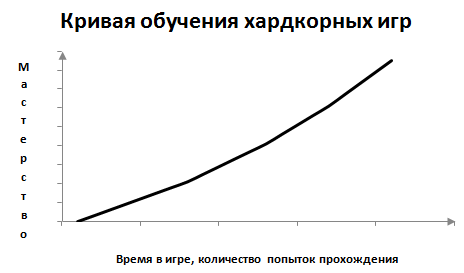
Fig. 6. Learning curve in hardcore games
The lower right square in Figure 2 is the territory of the games that are “harnessing” for a long time, and this, as a result, is turned into zilch. These games are usually unsuccessful. Or successful only due to its plot or more successful previous games of the same series. The learning curve in such games at first slowly and sadly goes up, and at this stage it may still be interesting to play if the player is interested in the game so much that he is willing to spend time learning, but then, when all the elements are studied and begin to repeat, play getting bored.
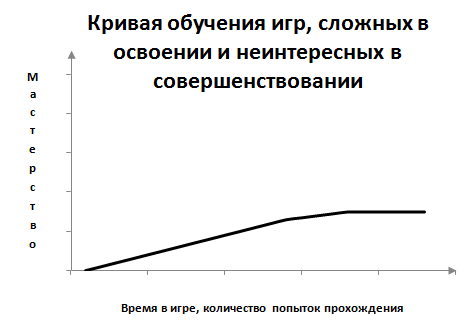
Fig. 7. The learning curve in hard-to-learn and uninteresting games.
Finally, the upper left square in Figure 2 is the space that most game developers strive to get into. This part of the graphics covers the games corresponding to the famous Bushnell formula: "easy to learn, difficult to become a master).
Why is this left upper square so good? Why is the phrase “easy to learn and difficult to master” regularly mentioned in articles that talk about the “golden rules of game design”? It's very simple: the game industry works for players, and players usually like the games from this square the most.
The first half of Bushnell's formula translates as “easy to learn.” From the point of view of the player, this means that he will not have to spend a lot of time and effort to master some of the basics. The player makes his opinion about the game during the first minutes of being in it, and if he does not manage to get comfortable during this time, he is unlikely to continue playing, finding the game too tricky. This does not mean that the player wants to master everything in the first 15 minutes of gameplay. Not at all, he wants to get new opportunities and new information as he lives in the game of new and new hours, but he wants to take the first completely independent steps now.
New features, elements, increasing the level of complexity - all this just works on the second part of Bushnell's formula: “it’s hard to become a master.” If a player, having spent 15 minutes in the game, has already fully met her, he succeeds in absolutely everything and he does not meet any new and unfamiliar elements, then he will quickly lose interest.
A classic example of a game, albeit a non-computer one, but nevertheless ideally illustrating the “easy to learn and difficult to master” formula, is chess.
Speaking of the MMORPG, corresponding to the Bushnell formula, it is not customary not to mention WoW. Having entered the game world, the player quickly understands what is required of him, thanks to simple controls and NPCs, which more than clearly explain the tasks. The newcomer who has just arrived, in the first minutes, enjoys the game. Ahead he has to develop, during which the game will become increasingly difficult until the player finally reaches the level of raids and PvP, where only the master can succeed.

Fig. 9. The learning curve for games that are easy to learn and difficult to become a master.
stairway to Heaven
In fact, the learning curve for online games that fall into the “easy to learn, difficult to become a master” and “difficult to learn, difficult to become a master” categories differs from the learning curve of their offline counterparts from the same squares. This curve will look more like a ladder consisting of many steps that are not always the same in height:
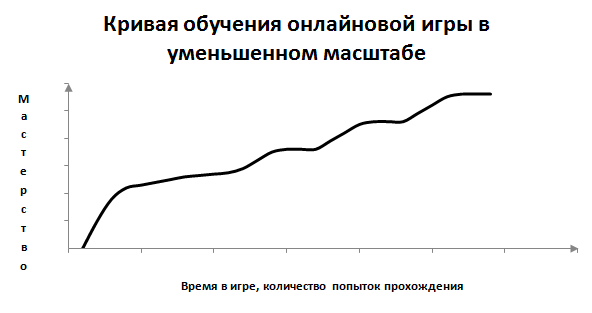
Fig. 10. Curve learning online games on a smaller scale.
After primary training, the player goes to the so-called plateau: a stable level of skill, which does not change over time, or slightly increases. Then the player is offered an innovation, which raises his level of skill to a new plateau. Not every player will overcome all of the possible steps.
Sessions like LoL or Dota are a prime example of games with a lot of plateaus on the learning curve. Short training allows you to quickly get comfortable with the basics of the game and learn how to play tolerably for one of the champions. This is the first plateau. But there are more than a dozen of such plateaus in this game. Each new champion is a new step on the chart. If the player does not want to constantly change the champions, then he, with a high probability, will try different builds for his only pet, climbing new plateaus in this way.
As a result, someone will stop at the first plateau, forever associating with their first champion, and will not even try to escape from the once-tested build (although this behavior is not encouraged by the game developers), someone will choose a couple of favorites for himself, someone - a dozen . Of course, the longer a player plays, the more he masters: still dwelling on one champion and playing them every evening without any changes for a whole year, considering the abundance of other possibilities, is, to put it mildly, strange, even if you are a complete conservative.
There is also a ladder in SF, consisting of a large number of steps, along which players will be able to climb depending on their desire: to go through all, to stop at one of the first, or perhaps to overcome only half of our stairs.
Note that in the games mentioned above, including SF, and in those where the steps are not so obvious, developers always have the opportunity to noticeably change the balance of the game with the help of patches, which they actively use. Such changes inevitably lead to the fact that players have to re-learn to play in the changed conditions, which raises them to a new stage of development.
From the point of view of the creators of the game, the introduction of changes in the balance is extremely beneficial, because it allows you to constantly warm up the interest of players.
Cribs
Speaking of learning curves, you should not discount the online community, which can radically change these curves for individual players. The fact is that for every more or less popular game on the Internet, you can find a whole brood of pages containing a sea of information both about the plot and about the ways of passing.
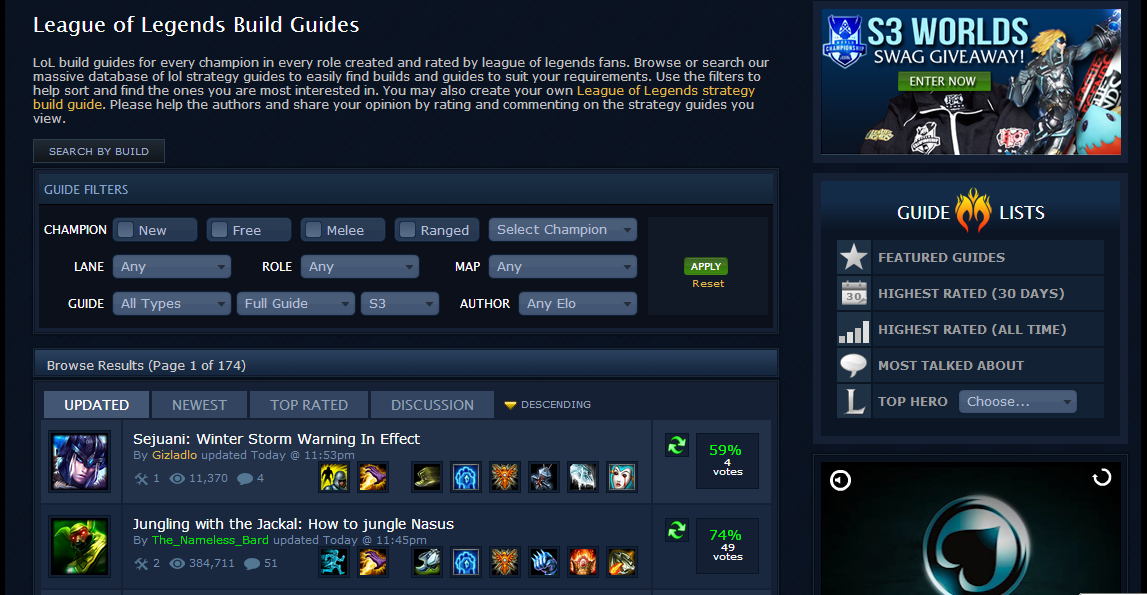
Fig. 11. Don't know how to score a champion? Find the answer on the Internet!
A player who actively participates in such communities and reads like pages receives concrete guidance from other, more experienced players, and as a result his pace of development is accelerated.
There is nothing wrong. Many developers even encourage this behavior. Not every player has the patience to independently study all the nuances on the way to mastery, which, as a result, could lead to the fact that the most impatient would leave the game, stalling at some difficult moment, and less experienced ones, going to the late stage of the game , they could not continue, since they have developed a character who tanks a little, slightly heals and still deals some damage, but by and large does not know how to do anything well.
Guides from the luminaries of the game are not cheats, which allowed other offline games to have infinite health or currency and not worry at all about your playing skill or not. These are tips that allow the player to get started faster and bring the new level of development closer, making it less high. After all, ultimately, the player himself must make an effort in order to take advantage of the guide read or viewed.
Conclusion
Creating a game with the correct learning curve is not an easy task, because you need to take into account a huge number of factors, both in-game and human. The more elements and various interfaces in the game, the more difficult it is to create an easy start and the more carefully you need to think over what exactly the player needs at the beginning for a comfortable game, and what can be reserved for later stages. The development of the plot, if there is one in the game, should also not contradict the learning curve. It is important to remember that games, no matter how different they are, often have much in common: the interface elements and the gameplay itself in different games of the same genre are often similar or even repeat each other. This leads to the fact that the learning curve for different players will also differ: the less experienced at the start will progress more slowly than the person who spends all his free time in such games.
The importance of this task should not be underestimated: the correct learning curve is very important for any game, be it a single offline role-playing game, a timekiller like “Evil Birds” and “Tetris” or MMORPG. If the proportions of the new and well-known, as well as the complex and simple, are correctly observed and given to the player at the right speed, then the success of the game, although not guaranteed, is highly likely.
Other materials can be viewed on the Skyforge developers website and in our Vkontakte community .
Source: https://habr.com/ru/post/198978/
All Articles